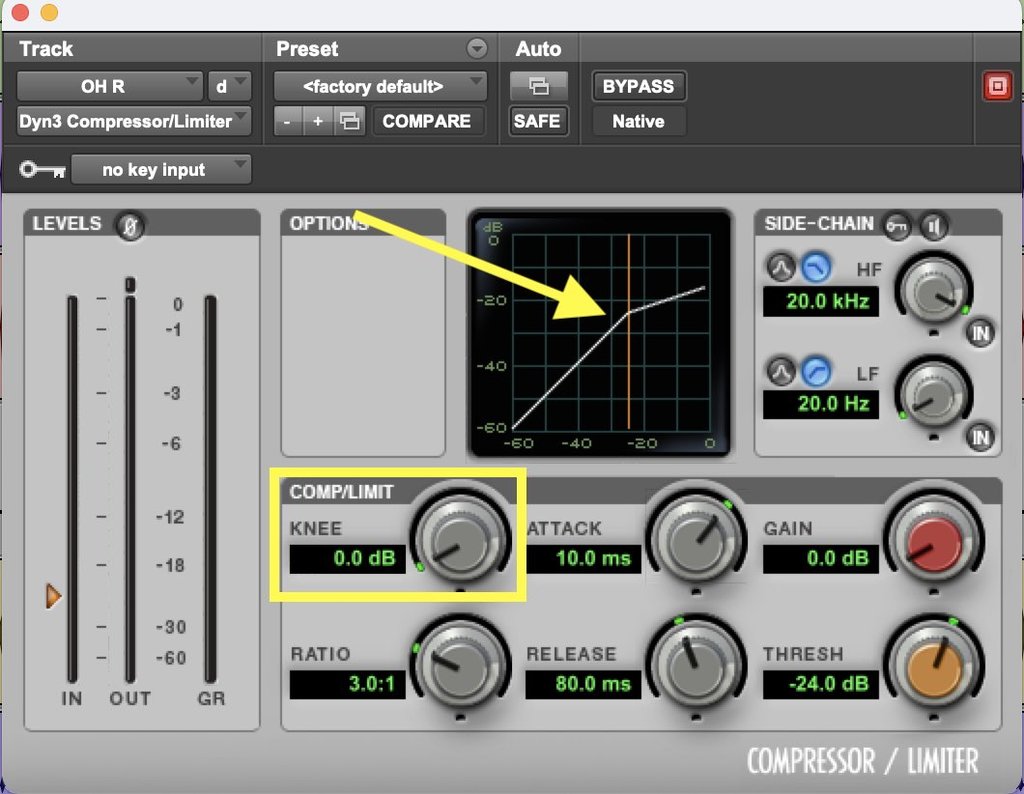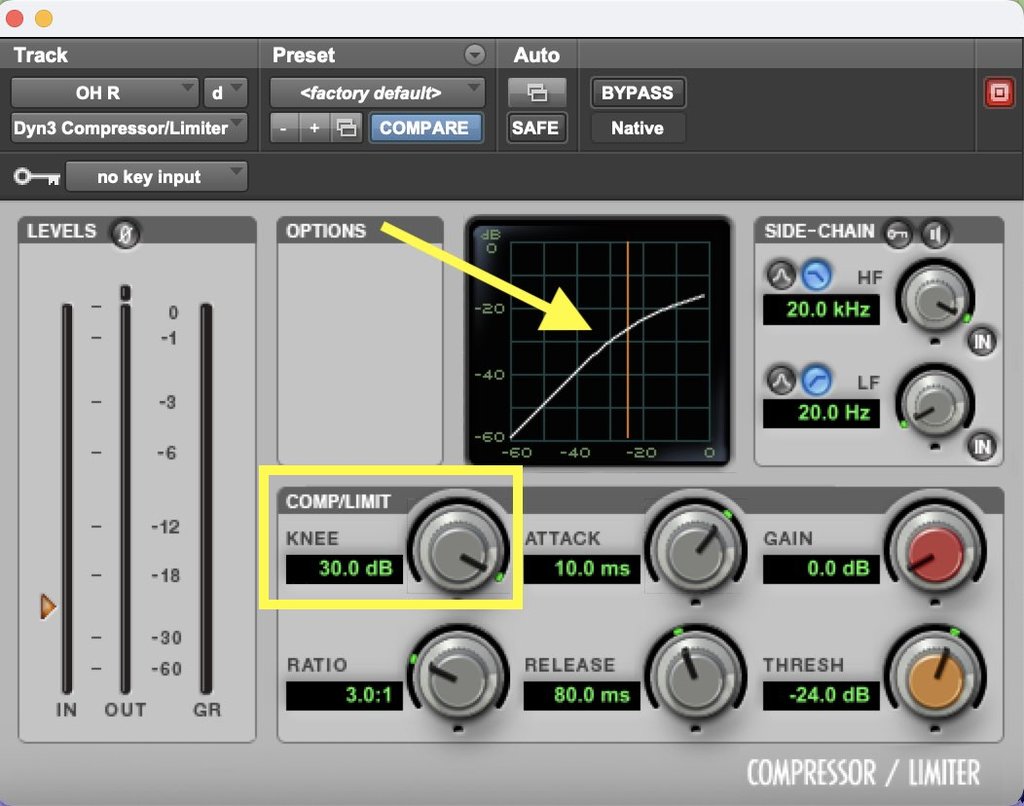- in Production by Bobby Owsinski
Understanding The Compressor Knee Parameter

I’ve received quite a few questions lately on the knee parameter of a compressor and what it does, so hopefully this post will provide the answers. You don’t see this control on all compressors (especially the vintage favorites), but it can be quite useful in getting a dynamics processor to do what you want.
What It Does
The knee control determines how fast the compressor (or a gate or any other dynamics processor) turns on after it reaches threshold. A high number gives you a gradual turn-on (called a “soft knee”), while a low number means that it will start to compress as soon as the signal reaches the threshold level (called a “hard knee”).
Think of it like a step on set of stairs. Normally the step is at a 90 degree angle so you have to lift your leg higher to go up each one. But if you smooth that angle out until it becomes a ramp, then it’s easier to go up the same incline but it will take a lot longer.

That’s what happens with a soft knee. It takes longer for the processor to reach full compression, but that could be exactly what we want. When the compressor gradually turns on, we don’t hear it as much, especially when the compression is heavy.
On the other hand, a hard knee will cause the compressor to turn on fast and will therefore give us a more agressive sound.
So where can we use each? Vocals are a natural fit for a soft knee, as we really don’t want to hear the compressor work if we can help it. On the other hand, drums sound a lot better with a hard knee.
Let’s Summerize
So to summerize:
- The knee parameter controls how fast or slow a processor like a compressor will turn on after the signal reaches threshold level.
- A hard knee turns the compressor on immediately
- A soft knee turns it on gradually
- A hard knee provides more aggression and is great for drums
- A soft knee sounds smoother and works well for vocals
Remember, the beauty of this knee parameter is that you don’t have to set it at as either hard or extreme soft extreme (like on the later versions of the dbx 160 range). You can set it anywhere in between for the setting that perfectly fits the situation.
You can read more from The Mixing Engineer’s Handbook and my other books on the excerpt section of bobbyowsinski.com.
